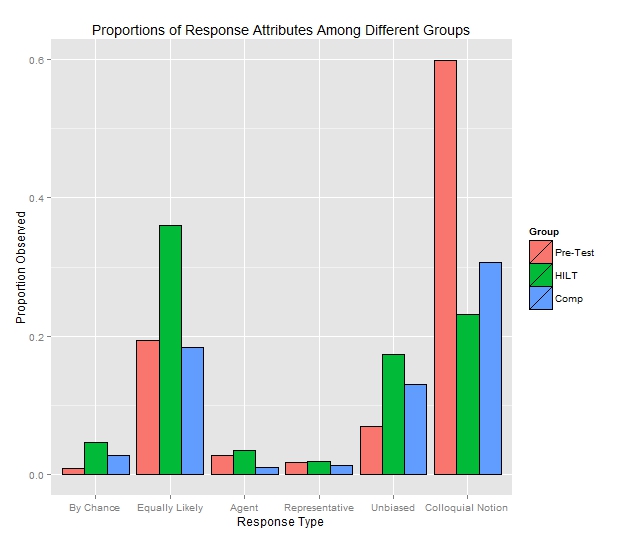Random
Overview
In general, we find that students tend to confuse random in an everyday sense (arbitrary, haphazard, very odd or unusual) with random in a strict statistical sense (selection from possible outcomes that each have some particular probability of occurring). Research shows that this confusion is very frequently not resolved even after a student has completed an introductory course.
Student Notions
When presented with a prompt such as: "For their survey, the researchers took a random sample of young adults, aged 18-35, from the list of registered voters in Georgia. What does random mean in this context?", student responses have been summarized into the following categories (and in this case, student responses may have fallen into multiple categories):
- Statistical Notions
- Notions of Chance
- Use of the word chance with no indication of equality
- Use of the word probability with no indication of equality
- Use of the word chance or likelihood specifying equality; e.g. "equal chance" or "equally likely"
- Agents
- Explaining random using an analogy to some kind of outside device such as a computer program or drawing slips of paper from a hat
- The sample is representative of the population
- The sample is unbiased
- Notions of Chance
- Colloquial Notions
- Without Order, Pattern, or Reason
- Without Rules or Procedures
- Unexpected
- Not deliberate
- Without previous knowledge of participants

The three groups are Pre-Test - before instruction, HILT - students who received instruction from HILT activities,and Comp - students who received standard instruction from the "comparison group", i.e., not including HILT activities.
With and without HILT activities the proportion of responses that had colloquial characteristics decreased notably, however th HILT group decreased more. Addtionally, the HILT group dramatically increased the proportion of responses that included notions related to likelihood and probability of outcomes, suggesting the rigor of comprehension of the concept of statistical randomness may have increased more than in the comparison group.
Activities
The following HILT activities have been designed to address student misconceptions regarding "Random" and have research that suggests they improve student learning:

|
| Zebra Hat |
